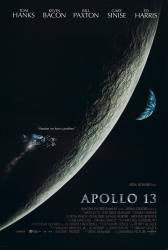Factual error: On several occasions the astronauts address the Capcom as "Andy." None of the Apollo 13 Capcoms were named Andy. Their names were Jack Lousma, Joe Kerwin, John Young and Vance Brand.
Suggested correction: While that is technically correct, many characters were condensed or changed to suit the movie. It's not a documentary, after all, it's a movie based on true events.
No, it's not a documentary, but all of the other characters have their "real life" names. Why change this one?
"Andy" was used to avoid viewer confusion between Jack Swigert and CAPCOM Jack Lousma.
They changed and condensed many items in the movie. "I vunder where Gunther Vent" quote was from Apollo 7, not 13. The EECOM John Aaron was given another name, and the "steely eyed missile man" quote was from Apollo 12. Marilyn Lovell didn't lose her wedding ring in the shower, she found it.
No, they used John Aaron's real first name, which did clash with John Young (played by Ben Marley) when they were in the simulator scene together.
Factual error: When they're flying around the backside of the moon, they mention the Tsiolkovskiy crater on the lunar farside, then mention they can see Mare Tranquillitatis and Fra Mauro - which are on opposite sides of the moon.
Suggested correction: The moon is a globe, not a disk. If you are in orbit around it, you will see features on both "sides" of the moon at the same time. You won't suddenly go from seeing only features on the far side of the moon to seeing only features on the near side of the moon.
Continuity mistake: The direction of the spacecraft keeps changing. After the extraction of the LM (Lunar Module), the craft is travelling with the CSM (Command/Service Module) engine bell facing forward. After the explosion, it is shown with the LM facing forward. Going around the moon, and back to earth, the CSM is again facing forward.
Suggested correction: The orientation of the spacecraft was not constant. There is no reason why it should be (and, indeed, good reason why it won't). Apollo 13 did indeed have the LM leading at some points and the CSM leading at others.





